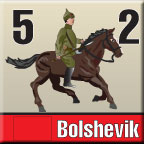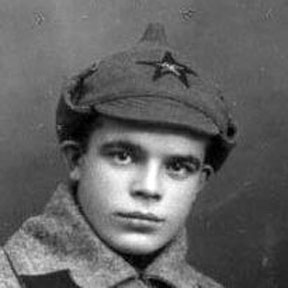| Pointy-Headed Leftists
By Mike Bennighof, Ph.D.
February 2016
When my parents returned from Austria a couple of years ago, they brought gifts for their grandchildren. My mother insists that any gift from Austria must have been made in Austria, and in the modern-day Austria that rules out about 99 percent of what’s offered for sale. Even the souvenir Salzburger Steers are now made in China. But she managed to find something for my 9-year-old sons made in Austria: Their very own embroidered budenovka to keep their heads warm. And stylish.
The budenovka is not actually of Austrian origin; it was supposedly designed by Russian painter Viktor Vasenovka with inspiration from ancient helmets made by the Kievan Rus, as part of a distinctive new uniform for the Imperial Army. While the Whites clung to the traditions, flags and dress of the old Imperial Army, the Red Army wanted to break completely with the past. The Reds also wanted a distinctive look that could in no way be confused with that of the old regime, and so they adopted Vasenovka’s odd pointy-headed headgear as part of the new Red uniform.
 The caps are visible in our Red Russia game, gracing Bolshevik cavalry and infantry icon. It’s the budenovka that lends a touch of authenticity to the game. The caps are visible in our Red Russia game, gracing Bolshevik cavalry and infantry icon. It’s the budenovka that lends a touch of authenticity to the game.
Initially called the bogatyrka, after the old heroes said to have worn them, the soft cloth cap was sewn out of six identical triangular pieces coming together to a high point. Ear flaps could be worn down, or buttoned up. The first caps were issued in January 1919 and they quickly became very popular in the First Cavalry Army. Soon the cap became known as the budenovka after the army’s commander, Semyon Budenny.

Chicks dig the budenovka (Civil War model shown here).
|
Originally khaki, the cap soon changed to gray, though both models carried a large red star over the forehead. The pointed top could be squashed down to fit under a steel helmet. The thick cap would allow its wearer to keep his helmet on even in bitterly cold weather, or at least so the theory went in the Red Army’s bureaucracy. In the field, Red Army troops continued to throw away their steel helmets, but kept the budenovka.
After the Civil War, the Red Army maintained its unique headgear, with some modifications. The red star changed from cloth to brass and gained a hammer and sickle icon, and the pointy top was reduced in height. Convincing troops to wear the cap under their helmet remained an impossible goal, and eventually Red Army regulations bowed to this reality and declared the budenovka an alternative headgear to the helmet. A winter version appeared with much deeper ear flaps that could be buttoned across the neck and lower face.

Trotsky’s personal Red Guards wore the budenovka — like the rest of their uniform, in red leather.
|
By the 1930s, though, the political show trials of Old Bolsheviks brought a number of Civil War symbols into disrepute. Many connected the budenovka with the Red Army’s former commander, Leon Trotsky, and when Trotsky fell out of favor so did the pointy cap. The Red Army began issuing a standard garrison cap similar to those worn by soldiers of other nations, but did not outlaw the budenovka. As the caps wore out, or their bearers mustered out of service, no new ones were issued to replace them.
Troops wore them during the Winter War against Finland, as units from warmer climes believed the budenovka would provide warmth for their heads; in practice, the cap as issued had no liner and despite its woolen construction it let the cold seep right in. Even the winter version didn’t offer a lot of protection. Photographs of Red Army soldiers taken two years later show none of the caps in evidence.

A late-model budenovka, with lower point and hammer-and-sickle insignia.
|
Afterward, the budenovka became popular children’s wear in the Soviet Union, and in the 1960s they could be found in the “Russian stores” that dotted Austrian cities. Astoundingly ugly concrete-block buildings, these shops contained goods of horrendously low quality and matching low prices: knockoffs like “Russian Leather” cologne or original goods like many forms of alcohol capable of inducing vomiting by their smell alone (come to think of it, that “Russian Leather” was probably just a re-labeling of the genuine Crimean champagne).
And you could get an embroidered budenovka there. I had one, and lost it many years ago, but not before it turned me into a pointy-headed leftist intellectual. Now it’s my own sons’ turn.
Be stylish with your budenovka! Click here to order Red Russia NOW!
Mike Bennighof is president of Avalanche Press and holds a doctorate in history from Emory University. A Fulbright Scholar and award-winning journalist, he has published over 100 books, games and articles on historical subjects.
He lives in Birmingham, Alabama with his wife, three children and his dog, Leopold. Leopold has a very fine nose.
|
